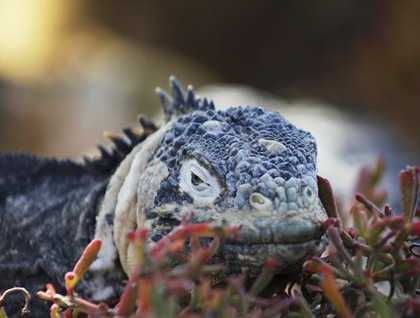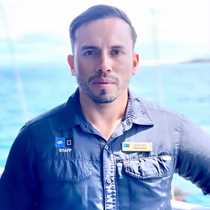We are still navigating among the central part of the enchanted archipelago. After a dry landing at South Plaza Island, we explored the inner part of this uplifted territory. We did not have to walk too far to encounter several land iguanas eating pads of prickly pear cacti. This is the species of iguana found in six different islands. Their colors, contrasted against the visitor site itself, were just fascinating! The National Geographic Islander guests took plenty of time for photographs and to enjoy the view as we approached the cliff where one can see the many species of sea birds flying in and out of theirs nests into the vast ocean.
A bachelor site for sea lions was encountered off the side of our path, and a few interactions of these males showed us how territorial and strong they can be as an individual easily reaches 250 pounds. All plants and animals have adapted to survive in this dry and flat piece of land the once upon a time was the ocean floor, but nowadays is above sea level. It was sunny and a bit hot so we could not have finished our morning better than with the chance of swimming off the National Geographic Islander and refreshing ourselves in the blue, clear ocean.
During the afternoon we had the chance to kayak and snorkel along the coast of Santa Fé Island, where we encountered some eagle rays, Pacific green sea turtles, sea lions, white tip reef sharks and many other species of tropical fish.
After a refreshing snorkeling outing we went hiking onto the island to explore the area in search for the endemic land iguanas only existing on this island and nowhere else in the planet. As we hiked on a strenuous old river bed that becomes flooded when it rains, we encountered several iguanas that were getting ready to rest under bushes and prickly pears. Some of the Fernandina rice rats were also spotted and few of our guests had the chance to see one of the endemic species of Galápagos land snakes.
After a beautiful sunset we boarded the National Geographic Islander to continue our exploration around Darwin’s natural laboratory of evolution.



.jpg?width=106&height=85&mode=crop&scale=both&quality=50)



